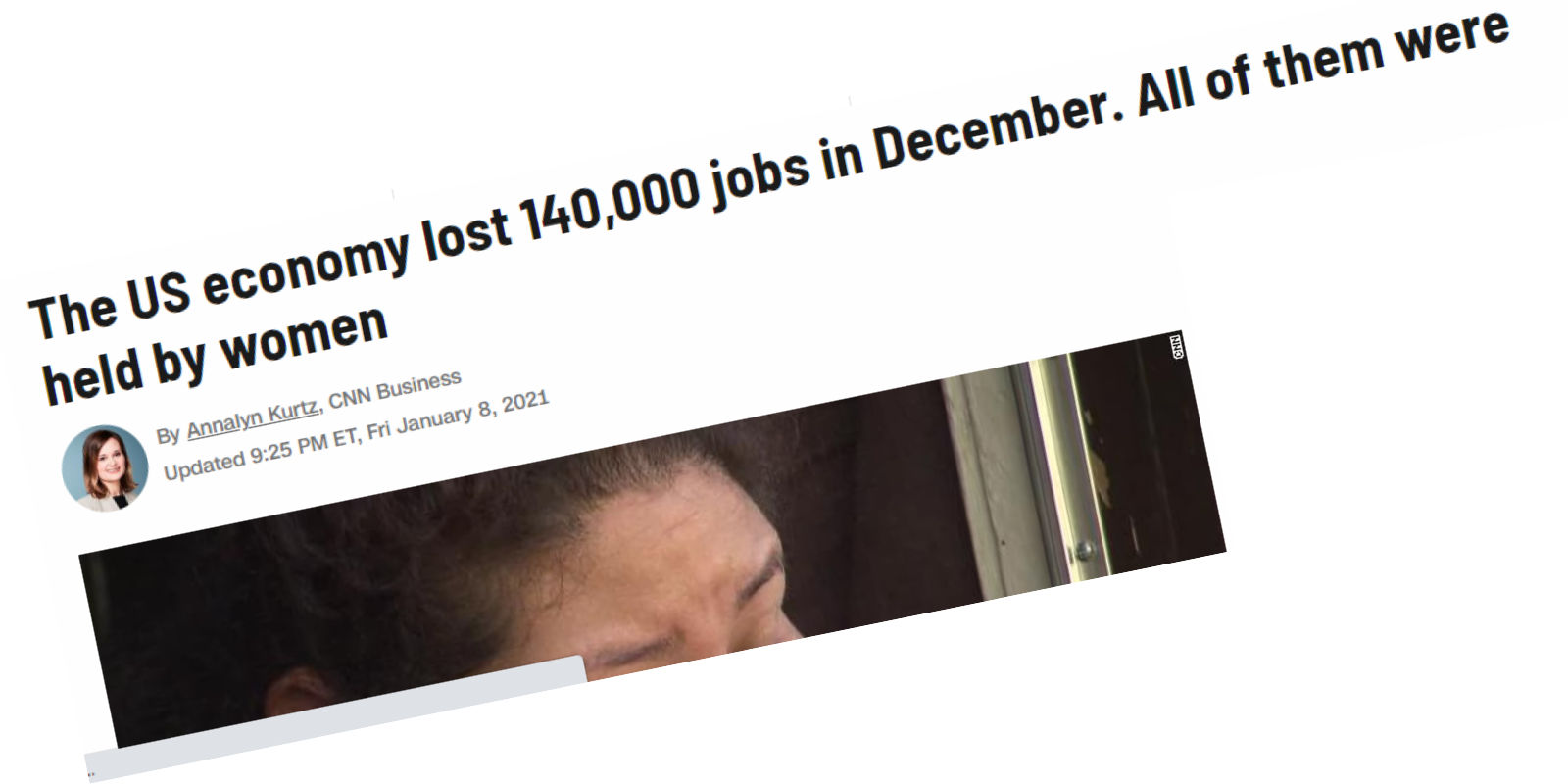By Lisa Taylor and Taryn Blanchard
There’s a lot going on in the USA right now. A riot on the Capitol. An impeachment and inauguration. Ever-present racial inequality and injustice. A pandemic that continues to wreak devastation from coast to coast—despite the fickle news cycle.
As career and workforce development experts watching from the north, the Bureau of Labour Statistics’ latest employment data for December sure caught our attention here at Challenge Factory. As in Canada, the American labour market and economy had actually been recovering slowly since April, although they remained at historic lows compared to those pre-COVID times that today seem so long ago.
In December, however, layoffs announced by American companies surged, unemployment benefit claims jumped sharply, and the economy lost 140,000 jobs (the first decline since May). The relatively unchanged unemployment rate, at 6.7 percent, and number of unemployed persons, at 10.7 million, might be clutched at as a glimmer of hope but quickly sours on the reminder that although both measures are much lower than their April highs, they are nearly twice their pre-pandemic levels from February (3.5 percent and 5.7 million, respectively). And the pandemic is still expected to get worse before it gets better.
Digging deeper into the data reveals even more troubling trends, and brings us to the true reason Challenge Factory was compelled to write this post.
Breaking down job losses by gender and race
Of those 140,000 American jobs lost in December, “All of them were held by women,” reported CNN. The headline sparked shock and some skepticism among the Challenge Factory team. First, we asked, “Is that actually true? No men lost jobs?” Second, we asked, “How is that possible?”
The first answer probably isn’t surprising to anyone with a data background: the more accurate headline is, as reported by BizWomen, “Women’s job losses in December were larger than net decline as men made slight gains.” This means a net number of 156,000 women left the American workforce while men gained a net number of 16,000 jobs.
But even that more nuanced understanding of the data is not the whole story. If you keep reading that CNN report, you’ll discover that white women made “significant gains” in December. In fact, it was Black and Latina women who lost jobs. The December unemployment rate is highest for Latina women, at 9.1 percent (+0.9), followed by Black women, at 8.4 percent (-0.6), with white women bringing up the rear at 5.7 percent (+0.3). The decrease in the unemployment rate for Black women is attributed to 154,000 Black women leaving the labour force entirely, marking the largest one-month drop in labour force participation since March and April 2020.
American women across the board were hammered in 2020. The pandemic has seen steep job losses in education, leisure and hospitality, and retail (particularly clothing and accessories stores). Education remains a female-dominated industry, Black and Latina women work disproportionately in jobs that do not have paid sick leave and the ability to work from home, and schools and daycares continue to close because of COVID—forcing women to choose between employment and caregiving.
On top of this, December saw an extreme drop in leisure and hospitality jobs, where women account for 53.1 percent of the sector workforce and accounted for 56.6 percent of the job losses, as well as a decline in state and local government jobs, with women comprising 91.1 percent of those job losses.
Headlines are not human stories
As we finished digesting the December numbers and their pandemic causes, another question emerged. Why did those headlines point to “women” as losing 140,000 jobs instead of “Black and Latina women”?
Katie Orenstein, CEO of the OpEd Project, reminds columnists that there is a difference between being right and being effective. The statistics reported for the December job losses in the USA are right, and they are effective at getting attention. But there is an implicit value statement being made in those headlines as well: “women job losses” would be more effective at getting attention than specifying “Black and Latina women job losses.”
Do generalities and flattened analysis really help us understand what’s happening? Do statistics like unemployment rates really help us identify solutions to rectify unfavourable economic conditions? We’re not so sure.
As a society, we are becoming too accustomed to scanning “numbers” instead of thinking about people. New COVID cases, deaths, job losses—these are all reported in aggregate and can blend together, over time coming to feel faceless and removed. This is normal given the circumstances. And data is 100 percent necessary. But if we want to live in a society that values people, caring for and helping each other, and advancing our social and economic well-being, data must also be humanized.
The people impacted and reflected in those statistics need to know that this job loss is no fault of their own. They also need to know that they are seen rather than just a number or statistic. This is why mislabeling or generalizing in headlines is so problematic.
This tension is also found in thinking and learning about the Future of Work. As Challenge Factory has discussed elsewhere, the Future of Work is human. We need the human stories behind the data to accurately know how to develop solutions that 1) move us out of the conditions created by our current workforce challenges as quickly as possible, and 2) allow us to proactively (instead of only reactively) shape the future we truly want. Valuing and focusing on human stories pushes us to be future-focused.
Consider this article by BBC Business reporter Natalie Sherman: “Unemployed in the US: ‘I don’t know what to do’.”
The article begins with a human voice: “I have no income,” says Sarah Groome. It ends with behavioural therapist Derrick Cisneros’ words: “Sometimes my phone is off for days until unemployment comes through…It’s a horrible place to be in.” Throughout, it also uses plenty of data.
For many of us, the COVID-19 pandemic has changed our relationship to data and its reporting—on daily, weekly, monthly, and annual timeframes. It’s essential we make sure it doesn’t negatively impact our relationships to each other.
Postscript: The Canadian Case
Similar economic downturns struck Canada in December, with net declines in employment and total hours worked for the first time since April, and driven largely by sectors (such as accommodation and food services) impacted by new COVID-19 restrictions. And throughout the pandemic, Canadian women have paid a heavier price than men.
Prior to July 2020, Canada’s monthly Labour Force Survey (LFS) did not ask respondents what population groups they belong to. Since July, that added data has not yet been made publicly available—although the LFS does report on it—and is only accessible in person at Statistics Canada’s Research Data Centres, which are currently restricted in Ontario due to the January stay-at-home order. This makes it more difficult for us to conduct the same breakdown analysis of the employment data by both gender and race as compared to analysis using the American Bureau of Labour Statistics’ data.

